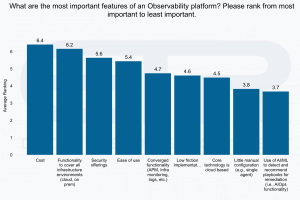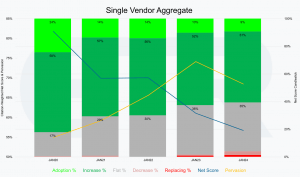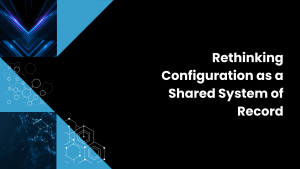ABSTRACT: KubeCon and CloudNativeCon EU, held in Paris, will showcase the latest advancements and discussions in the cloud-native ecosystem, attracting over 15,000 participants. The event underscores the pivotal role of AI and data science, focusing on projects like Kubeflow and the implications of the European Union’s new AI regulations for the field. Observability and automation trends will be highlighted, alongside the growing importance of Kubernetes in edge computing and the surge in developer productivity tools like Backstage. The rise of WebAssembly (Wasm) in cloud-native applications and the ongoing debate around data management with Kubernetes underscore the conference’s forward-looking agenda. Security, a perennial concern, will be addressed through various lenses, emphasizing the necessity of integrating security measures into the cloud-native infrastructure. The event will also value the informal knowledge sharing and networking that occurred outside of scheduled sessions, illustrating the community’s strength and the industry’s trajectory towards innovation, security, and developer efficiency.
KubeCon and CloudNativeCon, the flagship conferences of the Cloud Native Computing Foundation (CNCF), will take place in the romantic city of Paris, drawing over 15,000 developers, IT professionals, and business leaders from across the globe. From platform engineering to artificial intelligence, the latest edition of this event will set the stage for groundbreaking discussions and announcements that will likely shape the cloud-native and IT landscape in the upcoming years.
The Pivotal Role of AI and Data Science
AI and data science have become an essential part of the cloud-native ecosystem. Projects like Kubeflow are leading the way in combining Kubernetes with machine learning workflows. This year, discussions in Europe will focus on how CloudNative AI will transform infrastructure, and many sessions will be dedicated to the topic. Red Hat Senior Director of Market Insights, Stu Miniman, mentioned that AI will be front and center across many events at KubeCon. This highlights the growing focus on AI’s integration into the cloud-native space.
Timely as the European Union has recently passed new AI regulations, endorsed in December 2023. These regulations aim to safeguard fundamental rights, democracy, the rule of law, and environmental sustainability from the risks posed by high-risk AI technologies while fostering innovation and establishing Europe as a global leader in the field. The regulations categorize AI applications according to their risk level and impact, banning certain applications that threaten citizens’ rights. These include biometric categorization based on sensitive characteristics, emotion recognition in workplaces and schools, social scoring (like what is done in China), predictive policing based solely on profiling, and AI manipulating or exploiting vulnerabilities.
However, law enforcement is granted exemptions for using biometric identification in strictly controlled situations, such as searching for missing persons or preventing terrorist attacks, subject to stringent safeguards, including judicial or administrative approval. The regulation also outlines obligations for high-risk AI systems in sectors like healthcare, education, law enforcement, and critical infrastructure, requiring risk assessments, transparency, accuracy, and human oversight. General-purpose AI systems face transparency requirements and must comply with EU copyright law.
The regulations will support innovation and SMEs through regulatory sandboxes and real-world testing environments, aiming to balance promoting technological advancement with protecting societal values and rights. The AI Act has teeth and can impose significant penalties for non-compliance with the prohibited systems provisions, with fines of up to €35 million or 7% of global turnover.
Advancements in Automation and Observability
KubeCon’s sessions indicate a steady movement toward making observability a platform-centric play. Despite the complexity, consolidation among observability firms is underway, mirroring the trends seen in broader enterprise IT. While Red Hat is not directly working on OpenTofu, and IBM is contributing, it will be stirring conversations as the community anticipates whether it will gain momentum similar to OpenSearch following Elastic’s licensing changes. Infrastructure as code (IaC) continues to be the goal of many organizations, and many are still using Terraform from HashiCorp.
We expect news from vendors in the O11y space, such as Logz.io, Chronosphere, and New Relic. This space is ripe for consolidation, and with Splunk being acquired by Cisco, we believe that the observability data platform is in play for the first time in a long time. We expect a lot of discussion around logs, metrics, and traces and how AI will play a role in simplifying the entire stack. One of the big pieces that organizations are struggling with is ease of use, according to data from our partner ETR.ai. But that is still behind cost, technology coverage (platform), and security offerings.

It is not okay to be an observability offering and not have security as part of the offering anymore. We expect to hear a lot of discussion about how an open-source approach helps all these companies and allows them to differentiate on ease of use and how they bring the data together in a converged manner.
Kubernetes on and at the Edge
The edge has become a new frontier for Kubernetes applications, with exciting new solutions being developed to handle demanding workloads such as AI inference. One such technology, Red Hat Microshift, brings Kubernetes to the edge in a small, compact form factor. The versatility of Kubernetes and cloud computing is becoming essential in addressing the unique challenges posed by edge computing, particularly in use cases related to AI and IoT. The definition of what edge is is wildly different by industry, ranging from the phone in your hand to the car you drive to health sensors on grape vines in Bordeaux.

We have seen the adoption of Kubernetes jump the chasm and it is now mainstream. Most organizations understand the management of pods and clusters at this point. Now, organizations are moving on to the next level in the architectural stack, building applications using cloud-native components. This is shown in the ETR’s Kubernetes Single Vendor Aggregate view, filtered year over year, which shows the last five years. This chart is not specific to any vendor; it is more about the view on technology momentum and pervasion. Interestingly, pervasion (yellow line) in the 1700-plus organizations surveyed, over 68 percent of organizations cited Kubernetes. At the same time, spending momentum, seen as the net score (blue line), is over 56 percent, with anything over 40 percent seen as huge momentum. We know it is real when you see the red lines of decreased spending and replacing (churn) showing up. This means organizations are well out of the testing phase and into production. Expect the CloudNativeCon-oriented projects and the services that help from a multicloud and edge to be a dominant theme going forward, as organizations feel they have Kubernetes solved.
Enhancing Developer Productivity with Backstage
One of my favorite projects, Backstage, has been gaining traction as a tool for boosting developer productivity. Red Hat’s Developer Hub is a testament to the company’s commitment to Backstage, indicating a broader industry effort to combat cognitive overload among developers and set clear pathways for app development. It will be interesting to see how some of the other supporting organizations, VMWare from Broadcom in particular, are now approaching supporting this project. Starting initially with Spotify, this project has become the de facto project for hiding the complexities of Kubernetes as organizations look to build those cloud-native applications. We see this as gaining significant momentum as organizations look to simplify their developer experience. During our show, we will dive deeper into updates on this very important project.
The Rise of Cloud Native Applications and Wasm
WebAssembly (Wasm) is gaining momentum in the cloud-native space. Despite being overlooked in previous conferences, it is now being discussed more actively, indicating its potential to become a staple in Kubernetes environments. This week, Fermyon has announced WebAssembly for Kubernetes, and we expect more announcements in this space next week. We will host a panel discussion with Fermyon and Cosmonic to delve deeper into this topic and better understand if we are over the adoption chasm. This is similar to the issue we see in AI, where the challenge is to bring the AI or application to the data.
Innovating Data on Kubernetes
Data on Kubernetes is stepping into the limelight as more organizations seek to build robust data applications. The community is abuzz with the debate on whether to bring AI to the data or vice versa. Hybrid, multicloud, and edge scenarios are central to this discussion, with Kubernetes acting as the orchestrator for these complex workflows. Running a year-round virtual program, DoK will have an in-person meetup day on Tuesday. Some of the discussions have ranged from running databases, such as PostgreSQL, to how to provide zonal resiliency when running a Kafka cluster on Kubernetes.
Security for All
Security at KubeCon and CloudNativeCon EU will be high on everyone’s list as a pivotal concern that has come to be expected as a core component of the cloud-native infrastructure. Recognizing that significant resources must be dedicated to security measures underlines its critical role in the ecosystem. While the software bill of materials (SBOMs) continue to evolve, there is an understanding that they are not a panacea for all security challenges. Keeping abreast of the myriad of security and compliance demands imposes a substantial cognitive burden on teams. We expect Sigstore, security for service mesh, shift-left strategies for AI at the edge, authentication federation, and more to take center stage with many end-user organizations sharing their experiences. The need for a separate CloudNativeSecurityCon is a testament to the domain’s complexity and significance. Furthermore, security’s incorporation into platform engineering will continue to be discussed, illustrating its integral role in the broader architecture of modern IT frameworks. This holistic approach to security, woven into the fabric of platform engineering, signifies the industry’s proactive stance on building secure, resilient systems from the ground up.
Don’t Miss the Hallway Conversations
The social aspect of KubeCon and CloudNativeCon cannot be overstated. Hallway conversations, often called the “hallway track,” are invaluable for sharing knowledge, networking, and fostering a sense of community. These informal exchanges can be as valuable as the scheduled sessions, offering attendees insight into real-world applications of the technologies discussed.
As cloud-native technologies evolve, events like KubeCon and CloudNativeCon EU are pivotal moments for collaboration, innovation, and knowledge exchange, driving the industry forward. With a packed agenda and the charming backdrop of Paris, the 2024 edition has undoubtedly left an indelible mark on the cloud-native community.
Our Perspective
As KubeCon evolves and CloudNativeCon takes center stage, we see AI as another killer app that will be deployed using Kubernetes. This will be especially true at the edge. Although Security has its own conference, we expect security by design to be a hot topic. Distributing applications to the edge and cloud-native techniques will continue to dominate as organizations come to grips with data’s gravity and bring workloads to the data. We also expect a continued drumbeat about taking applications that have been traditionally deployed in virtual machines to containers and bringing heritage applications to be managed under Kubernetes. This will bring new challenges to what projects move from sandbox to incubated and graduated and which new projects gain momentum. With only 25 graduated projects, 37 in incubation, and more than 114 in the sandbox, help navigating these will be more critical than ever.



